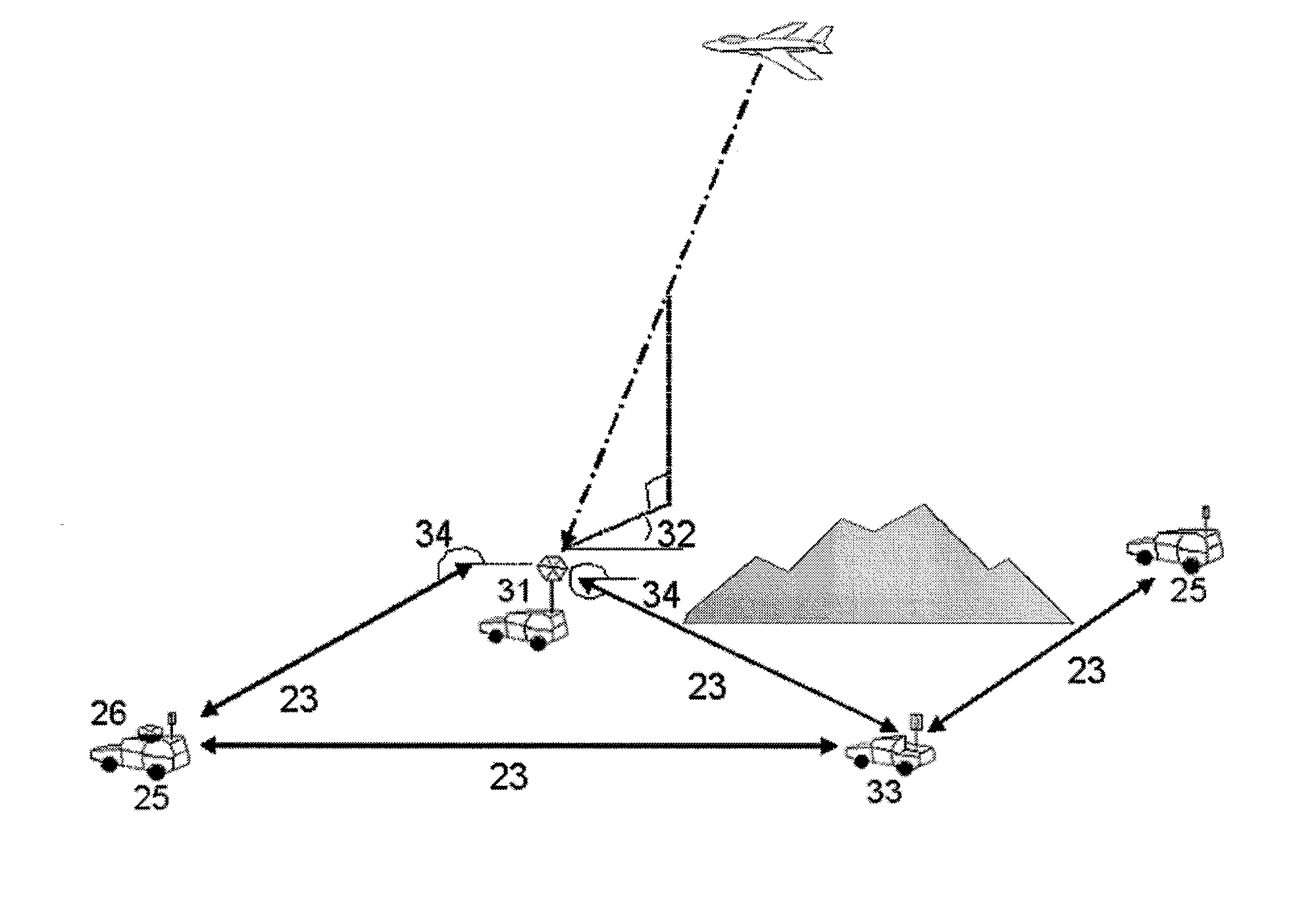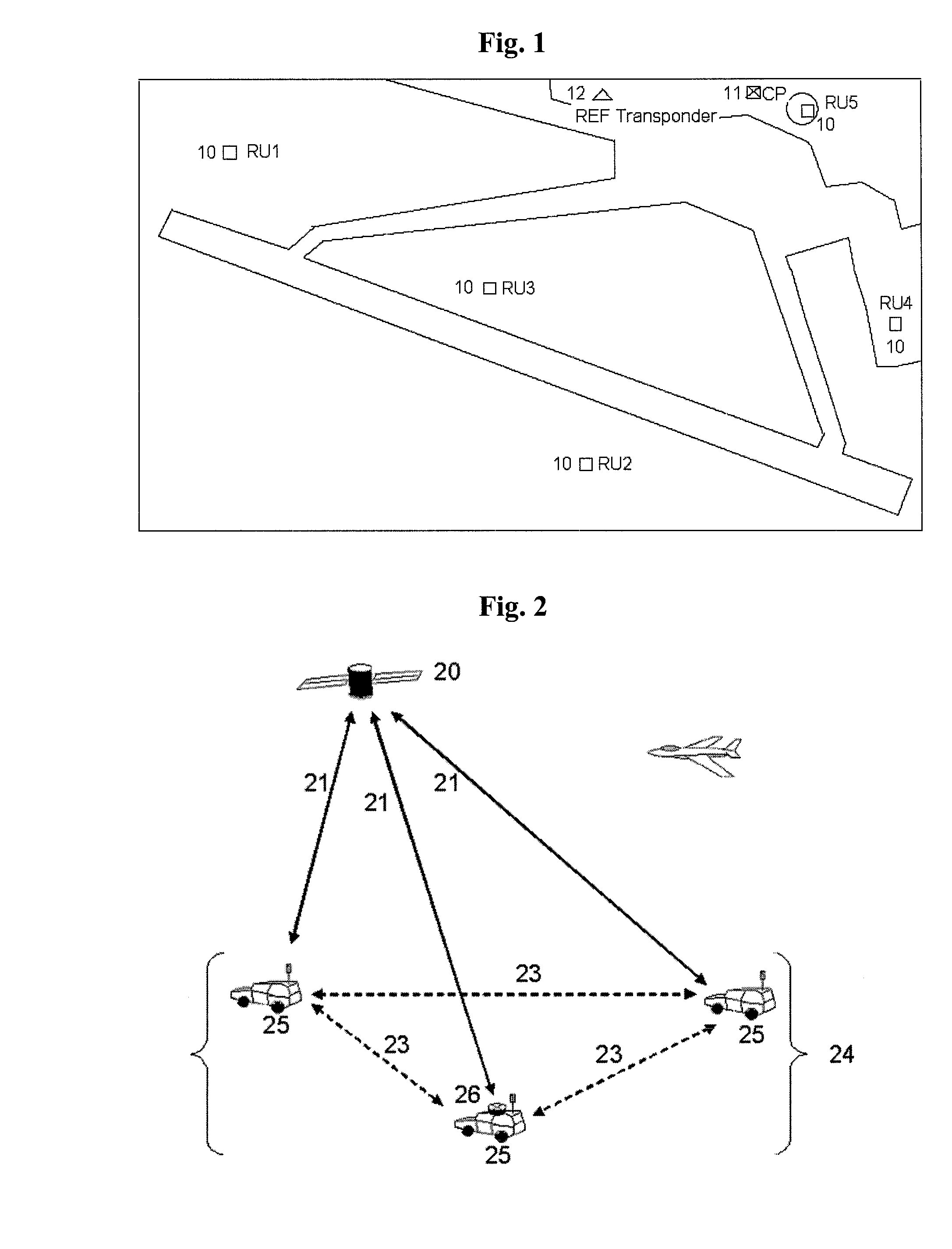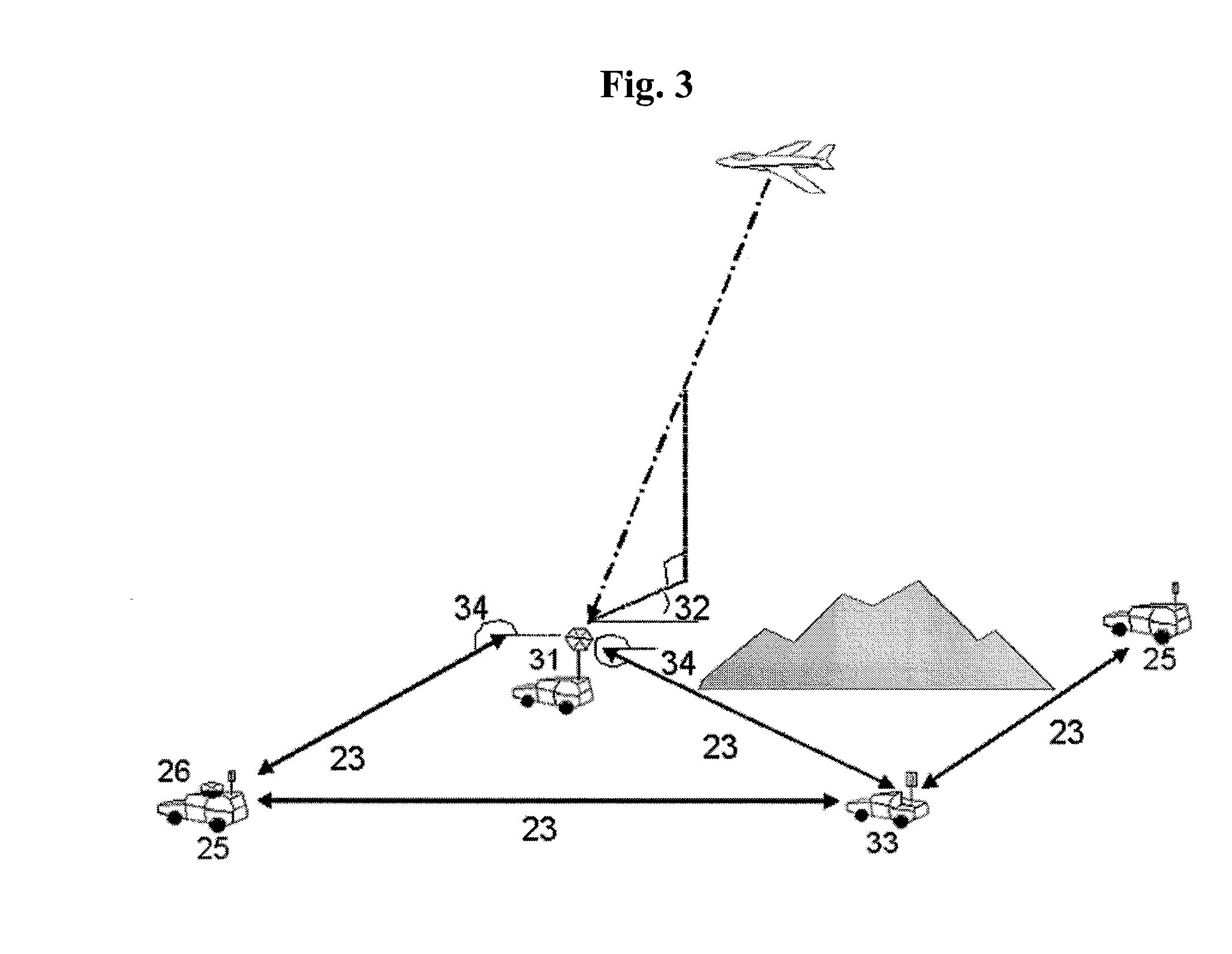System and method for multilaterating a position of a target using mobile remote receiving units
a multi-latering and target technology, applied in direction finders, directions using radio waves, instruments, etc., can solve problems such as errors in each ru, degrade the overall position accuracy of the system, and affect the accuracy of multi-lateration systems
- Summary
- Abstract
- Description
- Claims
- Application Information
AI Technical Summary
Benefits of technology
Problems solved by technology
Method used
Image
Examples
Embodiment Construction
[0036] The system and method of the present invention determine target location by signal processing measurements collected by mobile RUs that receive signals emitted from the target. While the prior art multilateration systems require the RUs and reference transponder to be stationary at carefully surveyed sites, the present invention allows the RUs to be mobile, and essentially eliminates the need for a reference transponder, at least in the traditional sense.
[0037] The present invention addresses three primary issues that allow the MLAT RUs to move during operation: (1) the ability to obtain a precise location for each RU “on the fly”; (2) the ability to maintain time synchronization among the RUs, even while the RUs are moving; and (3) the ability to establish and maintain a communications link between the RUs. The present invention addresses these issues by providing the RUs with the capability to self-survey, self-synchronize, and self-organize.
[0038] In accordance with one ...
PUM
 Login to View More
Login to View More Abstract
Description
Claims
Application Information
 Login to View More
Login to View More - R&D
- Intellectual Property
- Life Sciences
- Materials
- Tech Scout
- Unparalleled Data Quality
- Higher Quality Content
- 60% Fewer Hallucinations
Browse by: Latest US Patents, China's latest patents, Technical Efficacy Thesaurus, Application Domain, Technology Topic, Popular Technical Reports.
© 2025 PatSnap. All rights reserved.Legal|Privacy policy|Modern Slavery Act Transparency Statement|Sitemap|About US| Contact US: help@patsnap.com



